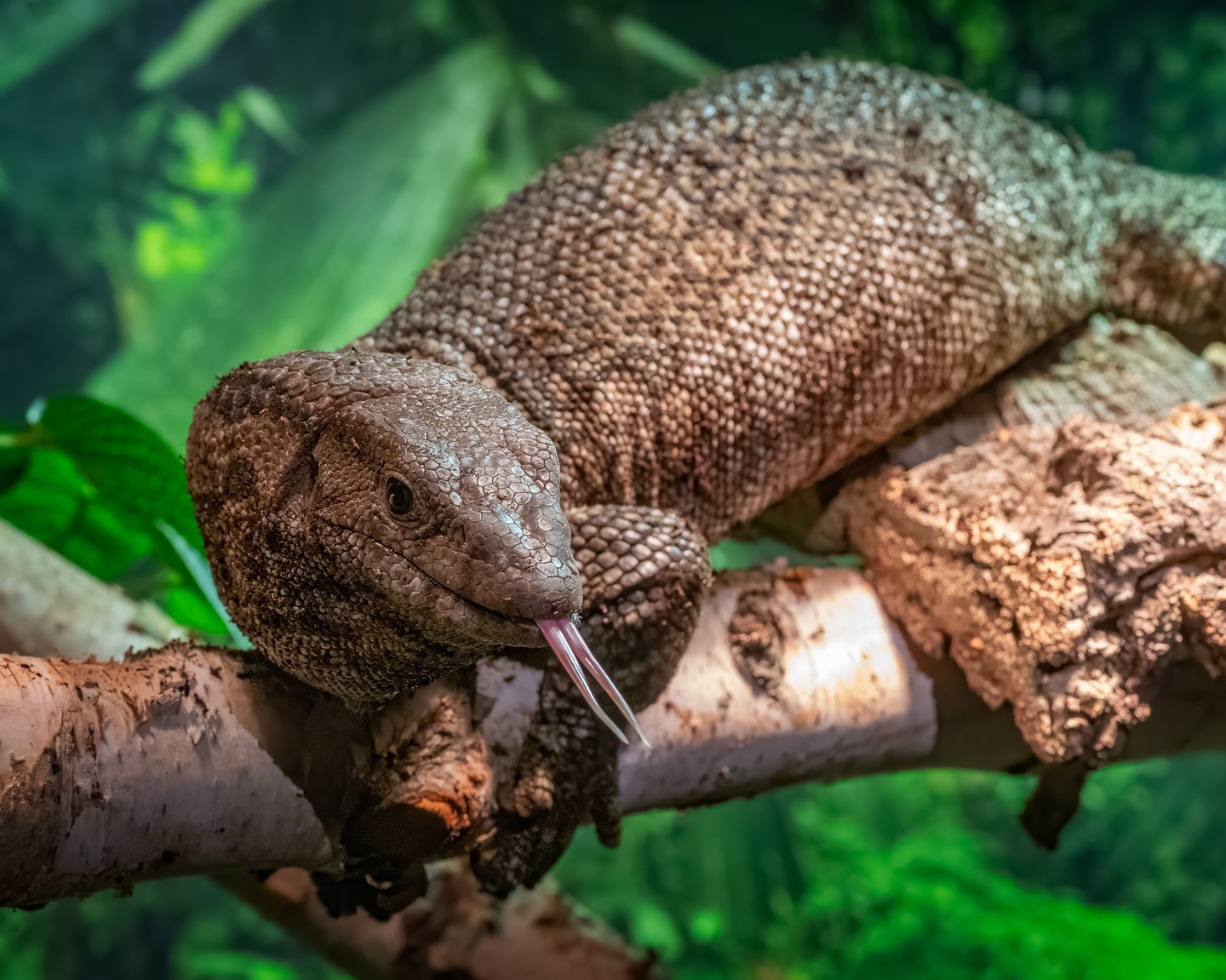- Exploration of the Dumeril’s monitor within the context of the Varanus genus.
- Understanding the natural habitat and behaviors of the Dumeril’s monitor.
- Insights into the physical adaptations and biological attributes of the Dumeril’s monitor.
- Examination of the conservation status and efforts regarding Dumeril’s monitor.
- Presentation of the Dumeril’s monitor in modern zoological exhibits and its role in education.
The Dumeril’s monitor, scientifically known as Varanus dumerilii, is a fascinating member of the Varanus genus, which encompasses approximately 86 species of monitors. These impressive reptiles, distinguished by their often large size and diverse adaptations, have captivated experts and enthusiasts alike. In the broader context of the family Varanidae, Dumeril’s monitor presents distinctive characteristics worth exploring. Named after André Marie Constant Duméril, a notable French zoologist, this species has contributed significantly to our understanding of monitor lizards.
Native to the dense and humid forests of Southeast Asia, particularly in countries like Thailand, Malaysia, and Indonesia, the Dumeril’s monitor thrives in environments that offer both dense cover and aquatic proximity. These reptiles are identified as terrestrial to semi-aquatic, showcasing their adaptability to varied ecological conditions. They are often found near slow-moving streams, marshes, and swamps, which facilitate their semi-aquatic lifestyle. The ability of these monitors to swim and remain submerged for extended periods—up to 75 minutes—is a remarkable adaptation that enhances their survival in such habitats.
Physically, the Dumeril’s monitor is a robust species characterized by its mottled green to brownish coloration, providing excellent camouflage in leafy, forested environments. This camouflage aids them in ambushing prey and evading predators. Their sturdy limbs, sharp claws, and powerful tails are essential tools for climbing, digging, and swimming. A notable feature is their forked tongue, similar to that of snakes, which aids in olfactory sensing—crucial for hunting and environmental awareness. These anatomical features position the Dumeril’s monitor as an adept predator capable of preying on various organisms, including small mammals, birds, eggs, and insects.
Within the ecological framework, the role of the Dumeril’s monitor is significant. As both predator and prey, they contribute to the biodiversity and trophic dynamics of their habitats. Their presence indicates a healthy ecosystem, highlighting the intricate balance of natural processes in their environment. Unfortunately, like many reptile species, they face threats from habitat destruction and the illegal pet trade, which endangers their populations in the wild.
Conservation efforts are essential to protect the Dumeril’s monitor from these threats. Preservation of their natural habitats through the establishment of protected areas and reserves is critical. In addition, regulations to curb illegal trade and educating local communities about the ecological value of these reptiles are vital components of conservation strategies. International cooperation is also vital, as it helps reinforce efforts across the regions where they are naturally found.
In modern zoological settings, the presentation of the Dumeril’s monitor offers an exceptional educational opportunity. Exhibits like the renowned Dragons exhibit provide visitors with a chance to observe these incredible reptiles up close, sparking interest and raising awareness about their conservation needs. These exhibits are not just displays; they serve as powerful tools for advocacy and learning, informing the public about the importance of wildlife conservation and biodiversity.
By showcasing the fascinating attributes of the Dumeril’s monitor, zoos contribute to the broader conservation narrative. They emphasize the critical role that each species serves within their ecosystem, encouraging an understanding and appreciation that transcends the confines of the exhibit itself. As guests engage with these exhibits, they cultivate a deeper connection to the wildlife and a stronger resolve to support conservation efforts.
In conclusion, the Dumeril’s monitor represents a vital link within the Varanus genus, rich with unique features and ecological importance. Their role in maintaining ecological balance, coupled with the threats they face, places them at the forefront of conservation discussions. Efforts to protect and preserve these monitors continue to be a pressing need, reinforced by educational initiatives in zoos worldwide. Through these efforts, we can hope to ensure both the survival of the Dumeril’s monitor and the continued diversity of their natural ecosystems.
*****
Source Description
The Dumeril’s monitor is one of about 86 species of monitors! 🦎
These reptiles are terrestrial to semi-aquatic. The Dumeril’s monitor frequently soak, swim and even sleep in water, and have been known to remain submerged for up to 75 minutes!
Come see our Dumeril’s monitor for yourself in our new Dragons exhibit 🌟
🫧
Image Description: A monitor with textured scales rests on a tree branch, tongue out, surrounded by green foliage.


